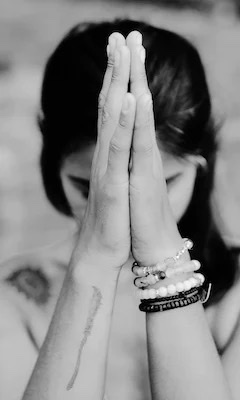Appropriation, Sterilization, and Trauma in Yoga

The next couple of parts in our reading of Embrace Yoga’s Roots will stick with me for a while. One week of contemplation is not enough. The ideas of appropriation and appreciation have already been in my mind for a while, so I appreciate very much Susanna Barkataki’s clear lists and reflection questions to address them.
The gist is, in my opinion, that in general the West absolutely appropriated yoga and made it something almost unrecognizable to the original culture it is attributed to. Referencing her list on page 46, Western yoga is profit-seeking, trendy, and made to fit the body-centric model of the “gym culture” of the West. Dominant white culture in a sense, took yoga and ran with it in the opposite direction of what yoga actually teaches.
“Yoga is appropriated when a practice that has been developed over thousands of years to help humans overcome attachment and suffering is used to, for example, commodify, sell products and/or objectify the body. This happens frequently in modern culture, especially in the West.”
Pg 48 in Embrace Yoga’s Roots
I can at least honestly say that Iyengar Yoga in general has avoided some amount of appropriation. We are definitely NOT the most “fashionable” or “glamorized” form of yoga. We require some amount of commitment to the subject itself and engage and challenge the mental aspects of yoga as much as the bodily ones. Our “look” includes yoga bloomers, function over form, and the most common statue you will find is Patanjali himself. We do utilize Sanskrit terms and chant the invocation to Patanjali out of respect for the entire lineage system of yoga.
I will say that Iyengar Yoga could fall into aspects of sterilization of yoga along with many other Western attempts to make yoga “less ‘foreign’ and more palatable for the dominant white culture” (pg 53). As mentioned before, BKS Iyengar himself even felt the need to do this as he traveled to Western countries wanting to share the teachings of yoga. There has been some decrease in including the invocation with more beginner student groups, and mentioning philosophical concepts that are the foundation of the practice are “saved” for later use once students seem committed.
The Iyengars were not immune to effects of colonization, and though very strong in practice and personality, BKS Iyengar has written and spoken about this dynamic in books and interviews. I would also argue that much of Geeta’s reactions to foreign students could easily be attributed to their “I know best” or “I know better” attitudes while in classes with her as the teacher.
“The British had ruled over India for hundreds of years so to be honest. It was very, very difficult for an Indian to move to England with his head up. And they all treated me that I am a slave, though I’d gone at the invitation to teach yoga, but still, I was a slave to them. So that was also a thing which I said, now, how to work for these slave-drivers to become my slave-drivers?”
BKS Iyengar in an interview with Talk Asia (CNN)
The trauma of colonization is felt in all BIPOC folks whether the dominant culture acknowledges it or not. “Colonization is a system, not a one-time event, and it can have ongoing repercussions and impacts” (pg 70). I think that Barkataki gives us some very clear examples of how we might become more attuned to and compassionate towards this experience in Western Yoga’s white-dominated spaces. Community and communication are key. Making choices of unification over separation where we can is imperative.
Reading these topics, we might feel challenged about how we practice or approach yoga, and I think that is ok. Susanna is not urging us to stop practicing or teaching yoga, which is of course a Universal practice for all. However, we must acknowledge that “its context is relevant for us today.” (pg 72)
“Without knowing it, when we roll out our mats we may just be scratching the surface of what it means to practice yoga. We are, intentionally or unintentionally, enacting an erasure, a forgetting.”
pg 71 – Embrace Yoga’s Roots
Yoga is a tool for healing trauma if it is approached with the same depth and understanding it was meant to have when developed over so many thousands of years. To remember this, in my opinion, makes yoga more rich and its potential boundless.
This Week’s Reading – Chapter III, Parts 4 and 5